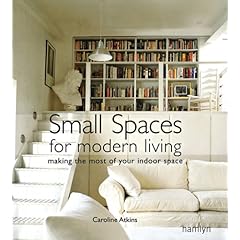
Making the most of small spaces
New condos are a tight fit and a design challenge
Walking in Bangkok's hectic Silom area, one finds three buildings with signs touting ''City Condos'' designed to serve the new generation's living style.
It's no certainty that Thais want to live in small spaces like residents in other big cities across the world, as Bangkok residents prefer to spend time relaxing in a private place instead of hanging out on the street at night. But it's probably a fact of life that somewhere down the line, some Thais will be stuck with small living spaces.
Residential units in the capital are getting smaller lately. Prior to the financial crisis, the tiniest available space was 26 square metres, offered by the low-income Niran Condominium, while the average space for young homebuyers was about 50 to 60 sq m.
Now the current champion of narrow spaces is My Condo by Plus Property, a subsidiary of Sansiri Plc. It's offering a petite 24-sq-m space designed for one person only.
With land prices rising, it looks as if smaller spaces are here to stay. And to make them more comfortable, more people will need to know how to maximise the space they have.
L.P.N. Development Plc, a leader in the small-condo market, has plenty of ideas for home buyers. The property developer staged the Flexible Room Design Contest 2006 focusing on interior decorating for small spaces. Room sizes could be either 25, 28 or 30 sq m, and they had to be designed to fit two people.
The winner of the inaugural contest was 24-year-old Peerapat Sintopnumchai. He said buyers who truly buy tiny spaces are usually young graduates without much money who crave independence. ''Budget is the big word; if they have more money they have more choices,'' Mr Peerapat said.
First of all, people must plan smartly. Many buyers feel that they need to bring in all of their personal belongings, but that could be a huge mistake.
Mr Peerapat recalls one client who is a genuine collector of small electric bikes, with five in total. ''I put all my energy into finding the idea to keep all of them, but the best I could do was to fit two bikes. That's it, only two,'' he said.
The first basic design tip, then, is that owners must limit possessions to fit with their room size and personal budget.
Mr Peerapat also warned that people overlook how their lives could change in the future, which could have a direct impact on how much stuff they stick into empty spaces.
The second basic design tip is for an owner to make a list of necessities, like a bedroom, closet, washroom, washing machine, kitchen, dining room, and living and study area.
The key is to be able to work and play in your space effectively, as a usable room feels larger. You must find the natural character of the room you want to live in and draw in visitors. Look for extra space, such as under a sloping ceiling, and find ways to utilise these little treasures.
If you can afford it, some relatively simple structural changes make a small room feel larger. Things such as built-in utilities save space, and were the key to Mr Peerapat's success.
He imagines two sisters living together. They have a duplex bed that covers only a single-bed space, and the living quarters are divided by a slim built-in closet designed especially for multiple functions.
Bookcases within a wall or cabinets in a closet equal functional living space. Moveable furniture also helps, but it should be compact. When selecting furniture, consider maximising its utility. For instance, a coffee table could turn into a chair or a computer desk.
Removing or replacing doors can enhance light and airflow within small rooms. For example, a door can be a window or removed altogether.
In addition, you can remove all or part of a wall by cutting out an internal window between rooms, or you can take out the wall completely, such as between a master bedroom and a smaller bath. But beware of balancing the need for privacy with the desire for openness.
Light and airflow are also important, and maximising them is the key to making the space feel different. Furniture and decorations made of glass, metal, wood and leather all reflect the light in a way that brightens a space. A mirror is the most efficient way to maximise space and brightness.
The trick here is to place lamps near walls to reflect light across the room instead of simply increasing the number of light sources. You should also avoid hanging lights overhead as they draw the walls in.
When a space is tiny, visual simplicity helps maintain a sense of class. Too many details can quickly make things chaotic.
Paint and colour are also very helpful, as a light or cool colour amplifies reflection. It can brighten and energise life in a box.
Finally, get into the habit of using multiple-duty items. You won't need to keep opening your wallet for new pieces and you can keep your small space in the best shape at the same time. Even in a tiny box, you can enjoy home sweet home.

No comments:
Post a Comment